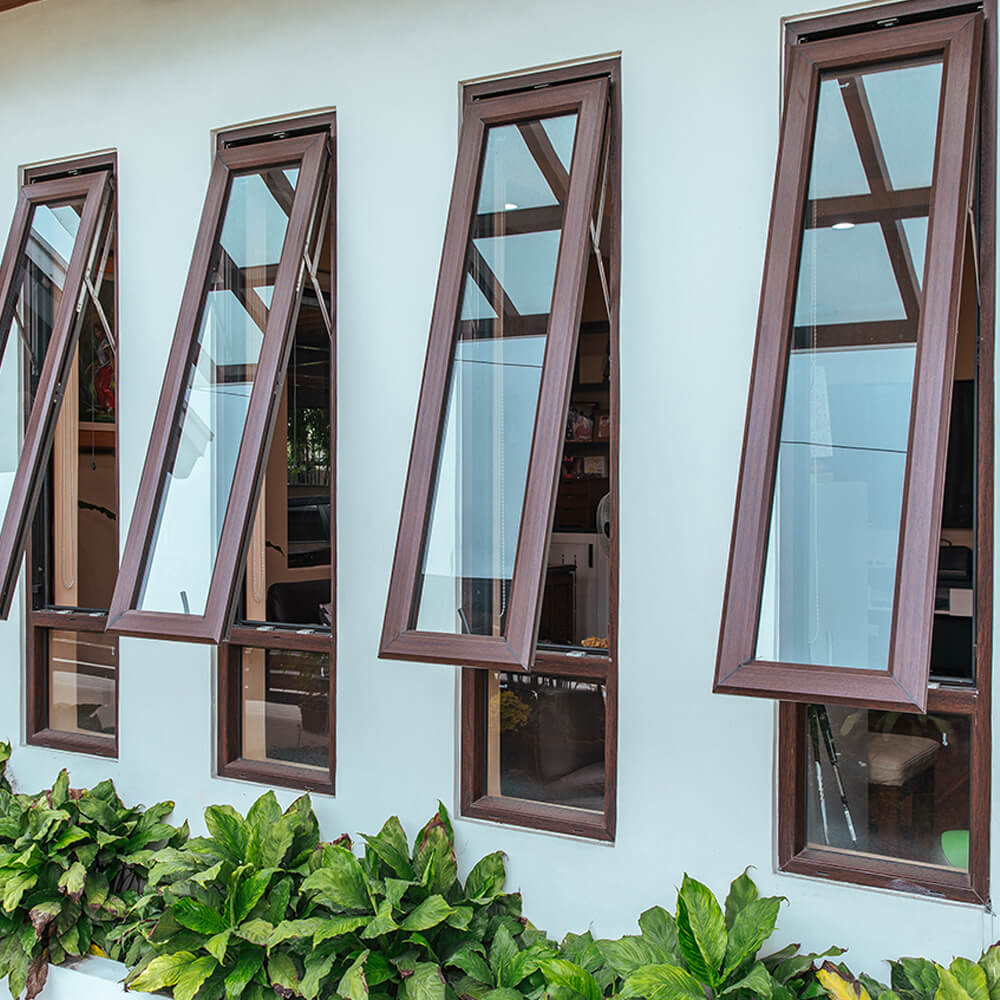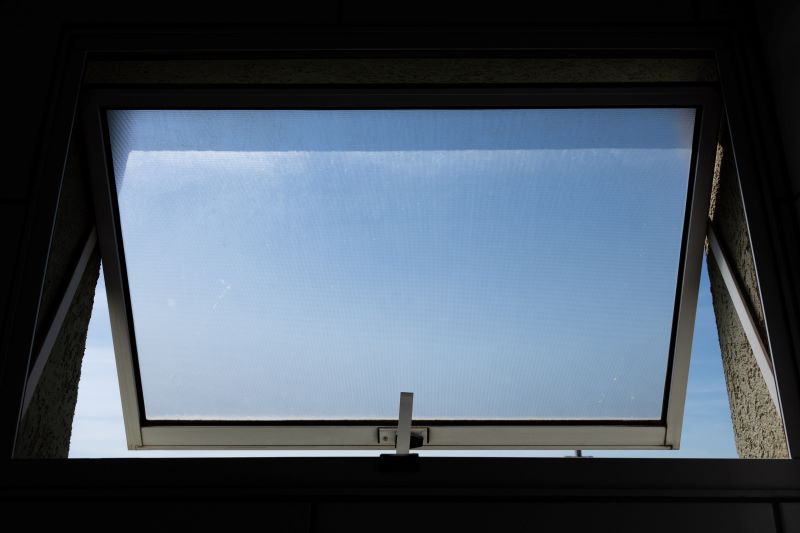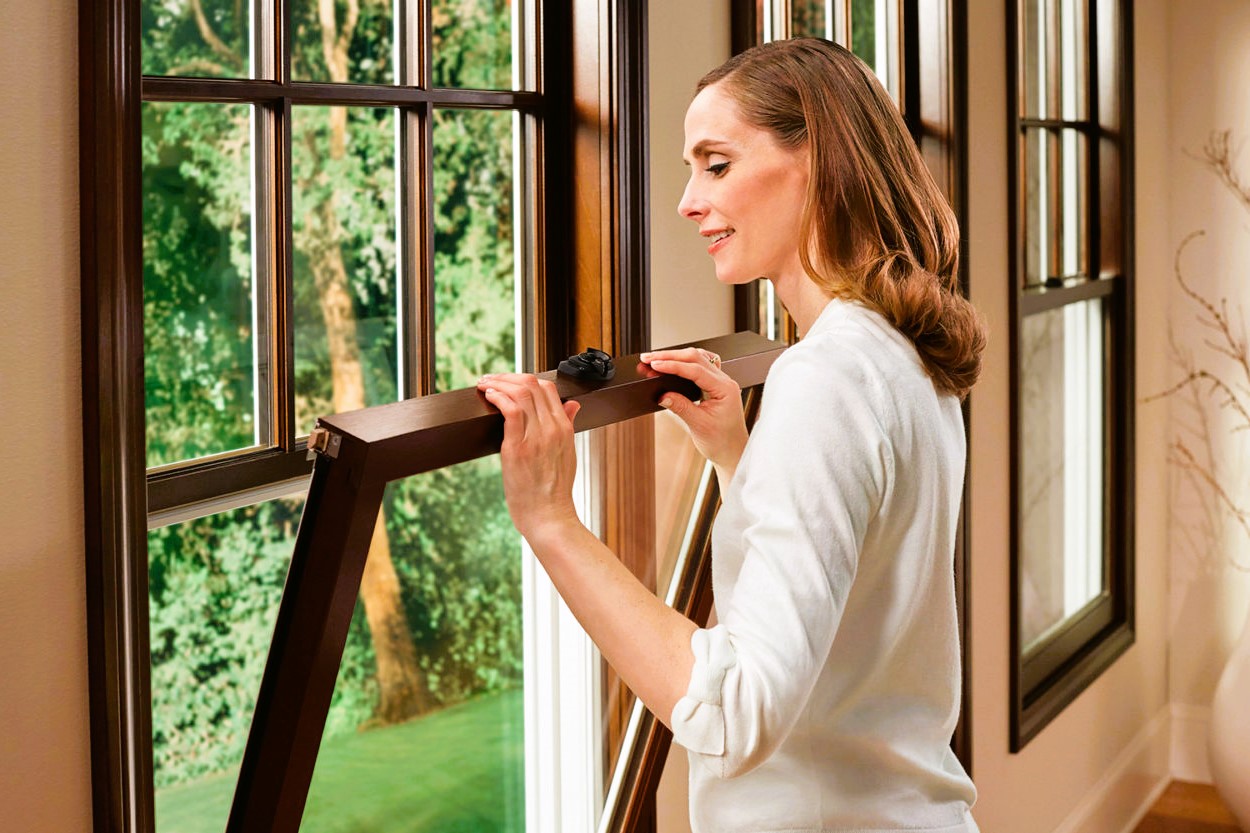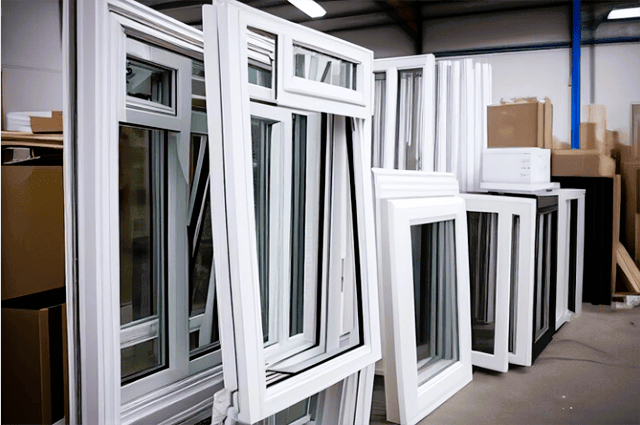When embarking on a quest for new windows, you will inevitably encounter the terminology “casement windows” and “awning windows” frequently. So, what exactly do these window variations entail, and what distinguishes the casement from the awning?
In truth, casement and awning windows are closely akin—they both fall under the category of “crank” windows, operated manually via a crank mechanism.
The defining distinction between casement and awning windows pertains to their pivot point. Casement windows pivot from the side, whereas awning windows pivot from the apex.
Both variants extend outwards entirely, rendering them ideal choices when abundant ventilation and copious natural light are prerequisites.
Windows’ Characteristics
Casement Windows
In their operational modus operandi, casement windows bear a semblance to conventional doors. The lateral hinges facilitate an outward swing to the left or right of the window frame.
The majority of casement window models are actuated by a manual crank; however, there are also variants with push-open mechanisms. An internal latch secures the window tightly when it is in a closed configuration.
Casement windows are available in diverse sizes, with a prevalent design favoring window apertures that have greater height than width.
Their virtue lies in affording unadulterated, uninterrupted vistas of the external environs, thus making them a favored choice for individuals seeking panoramic scenery akin to picture windows but with additional utility.
Awning Windows

Awning windows mirror the functional principles of casement windows, commonly manipulated through a hand-operated crank. The distinguishing feature is their upward pivot, contrary to the lateral orientation of casement windows.
This attribute bestows upon awning windows a unique benefit: when open, the inclined surface effectively diverts rain and other forms of moisture away from the window opening.
In essence, one can maintain window ajar in light rain sans concern for precipitation infiltrating the interior—a boon for those residing in temperate yet damp climes.
Another significant deviation in the casement versus awning dichotomy is that the latter caters to window apertures characterized by greater width than height.
Casement vs. Awning Windows: A Recap
- Both versions employ a crank for both opening and closing operations.
- Casement windows pivot laterally.
- Awning windows pivot skyward.
- Casement windows feature greater height than width.
- Awning windows feature greater width than height.
- Both facilitate ventilation, sunlight ingress, and panoramic views.
- Awning windows deflect moisture.
Window Placement
Casement Windows
From a placement perspective, casement windows make an astute choice for locations that are otherwise cumbersome to access. These include areas above countertops, sinks, or elevated windows beyond one’s reach sans the aid of a boost.
The easily reachable hand crank renders the task of operating casement windows in obstructed conditions relatively straightforward. Unlike traditional double-hung windows that may necessitate scaling kitchen counters or the use of stools for manipulation, the cranking mechanism is a more accessible alternative.
It merits mentioning that casement windows are best suited for window apertures of modest to intermediate dimensions. This is due to the fact that oversized windows may impose excessive strain on the side hinges over time, leading to deformities.
Awning Windows

Awning windows are the preferred choice for spaces where consistent, unrestricted ventilation is a priority, even in the presence of inclement weather. These windows are notably suitable for settings such as kitchens, bathrooms, home offices, and common living areas.
They pair harmoniously with expansive picture windows, allowing for maximal illumination and panoramic vistas while maintaining ample air circulation.
As an example, you can install a picture window that consumes nearly an entire living room wall, complemented by a short, broad awning window at the upper or lower extremity for the purpose of ventilation.
Another creative strategy is to situate awning windows high up on a wall, permitting light and air ingress without sacrificing a room’s privacy—reminiscent of a skylight.
Analogous to casement windows, awning windows are offered in a diverse array of dimensions. However, due to their inherent breadth, they are less suited for taller window apertures.
Nonetheless, the integration of multiple awning windows or a fusion of awning and picture windows can effectively address the need to occupy taller window openings with upward-pivoting windows.
One additional point of consideration for casement and awning window placement is their outwards swing upon opening. Thus, it is imperative to ensure that surrounding foliage, shrubbery, and any other impediments maintain a sufficient distance from the window openings, allowing for unobstructed operation.
Energy Efficiency
In the realm of energy efficiency, no perceptible variance materializes in the context of casement versus awning windows. Both genres of windows are meticulously engineered to adhere to contemporary standards of energy conservation.
Depending on your energy efficiency prerequisites and financial considerations, you may procure models in either style outfitted with energy-efficient double- or triple-pane glass.
Security
Both variants of windows are esteemed for their impregnability, as they resist external manipulation. To unfasten them, one must operate the internal hand crank.
For premium casement and awning window replacements, turn to Hodges Windows and Doors. Our inventory encompasses the latest iterations of casement and awning windows.
Whether you are contemplating window replacement as part of a renovation endeavor or embarking on a new construction project, our seasoned professionals possess the acumen to guide your selection of the most fitting awning and casement windows for your property.
What are you awaiting to elevate the stature of your home’s windows? Reach out to us without delay for a comprehensive elucidation of the awning and casement window models at our disposal or to obtain a cost-free quotation.




